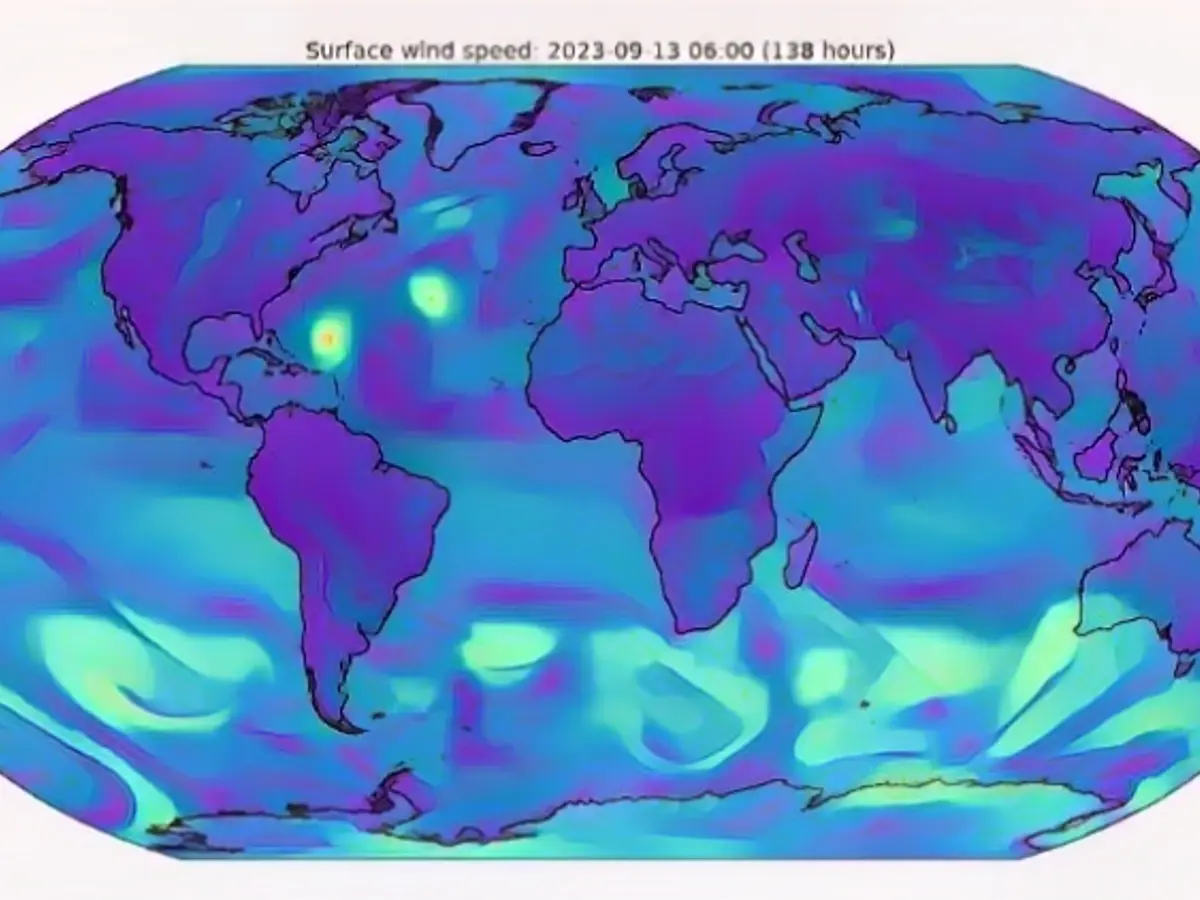Revolutionizing Weather Predictions with AI
Google's DeepMind has set the meteorological world abuzz with its latest invention - the AI forecasting powerhouse, GraphCast. Analysts and experts are reliably reporting that this new AI outperforms conventionally powerful weather models in many instances, all while maintaining an impressive level of efficiency. Could we be on the brink of witnessing traditional forecasting methods make way for their AI counterparts?
In a recently published study within the renowned scientific journal, Science, Google DeepMind’s researchers presented the AI, GraphCast. According to their analysis, the AI can generate impressive 10-day forecasts with unparalleled precision, even in cases where its competition, such as the European Centre for Medium-Range Weather Forecasts' (ECMWF) IFS HRES, fails. Furthermore, the research shows that in up to 90% of cases, GraphCast generates more accurate predictions of temperature and precipitation than the ECMWF's best model. In addition, GraphCast often allows for the extended forecasting of tropical cyclones' paths several days ahead of conventional models.
One significant advantage of GraphCast comes with its remarkable efficiency. The AI requires significantly reduced computing power and can operate on a single processor. Due to this performance boost, the research indicates that it delivers results a thousand times faster than conventional models, a game-changing revelation for the field of weather forecasting.
Traditional methods, time-consuming and costly
Traditional, numerical weather models are often complex, requiring extensive computational resources. Utilizing powerful data centers and advanced supercomputers, these algorithms still struggle to keep up with required calculations due to their sheer complexity. Implementing GraphCast could mean substantial cost savings for the industry by utilizing AI's abilities to deliver the same or even better quality results with a fraction of the required resources.
The field of meteorology will likely continue its focus on improving numerical models and optimizing them for various applications. Researchers from the natural sciences will remain vital in interpreting and better understanding these complex algorithms and the findings they provide. With AI, however, it may become possible to make more efficient use of resources by streamlining the optimization process of classical weather models.
Translating AI syntax into weather predictions
Artificial Intelligence (AI) utilizes neural networks, which consist of networks of interconnected nodes resembling human brain functions. During training, these nodes are adjusted and weighted based on sample data sets, allowing the neural network to recognize patterns and provide insights or predictions. In the realm of weather forecasting, AI can process historical data to generate new predictions with remarkable precision.
Traditional forecasting has relied on mathematical and physical models, refined over decades and utilizing complex formulas to produce an analysis based on initial data sets. Although highly effective, these formulas often have limitations due to their approximate nature and resource intensity. AI, with its unconventional approach, surpasses these limitations in part, offering a promising opportunity in the field of weather forecasting.
AI's potential challenges
Though AI boasts numerous advantages, the technology's unconventional approach also includes challenges. It should be noted that in certain instances, including the recent hurricane Otis near Mexico, GraphCast's predictions were not as accurate as classical models. This discrepancy may be due to AI's reliance on historical data, which may not adequately account for rapidly evolving climate change scenarios.
Theoretically, researchers from the Jülich Supercomputing Center have proposed the idea that traditional weather forecasting could be replaced by AI approaches as early as 2021; however, this requires significant breakthroughs, such as effectively integrating physical laws into AI algorithms. This way, the benefits of both traditional methods and AI can be harnessed to improve upon the weaknesses of each.
In the realm of meteorological research, scientists are exploring AI's potential as a tool for optimizing weather forecasting, hoping to increase efficiency and accuracy. The AI opportunity in weather forecasting demonstrates an exciting prospect for a new generation of researchers. These scholars will have the chance to explore the intersection of AI, climate science, and predictive modeling, fundamentally reshaping our understanding of climate patterns.
Enrichment Data Integration:
- In comparison to traditional weather forecasting models, AI models commonly demonstrate exceptional improvements in several key areas, including forecast accuracy, speed, and extreme weather prediction capabilities.
- For instance, the GraphCast AI by Google DeepMind outperforms existing models in 10-day forecasts, with a processing power efficiency equivalent to one thousand times faster than classic models.
- Similarly, the GenCast AI suppresses traditional systems like the ENS in predicting 15-day forecasts with 97.2% accuracy, while supporting faster computations on the Google Cloud Tensor Processing Unit v512.
- AI models effectively predict extreme weather events, such as cyclones, hurricanes, and heatwaves, and perform reliably in tracking cyclones' landfall days with remarkable accuracy.
- Probabilistic forecasting techniques, actively employed by GraphCast and GenCast, enhance the reliability and precision of weather predictions by capturing the likelihood of various scenarios.
- AI models like GraphCast and GenCast also offer new opportunities for global scientific collaboration. They are open-source and are being tested and utilized by centers like the ECMWF.
- AI's integration into platforms like Google Search and Maps, providing real-time, AI-powered forecasts for both public and research use, paves the way for a future of widespread AI forecasting utilization.








